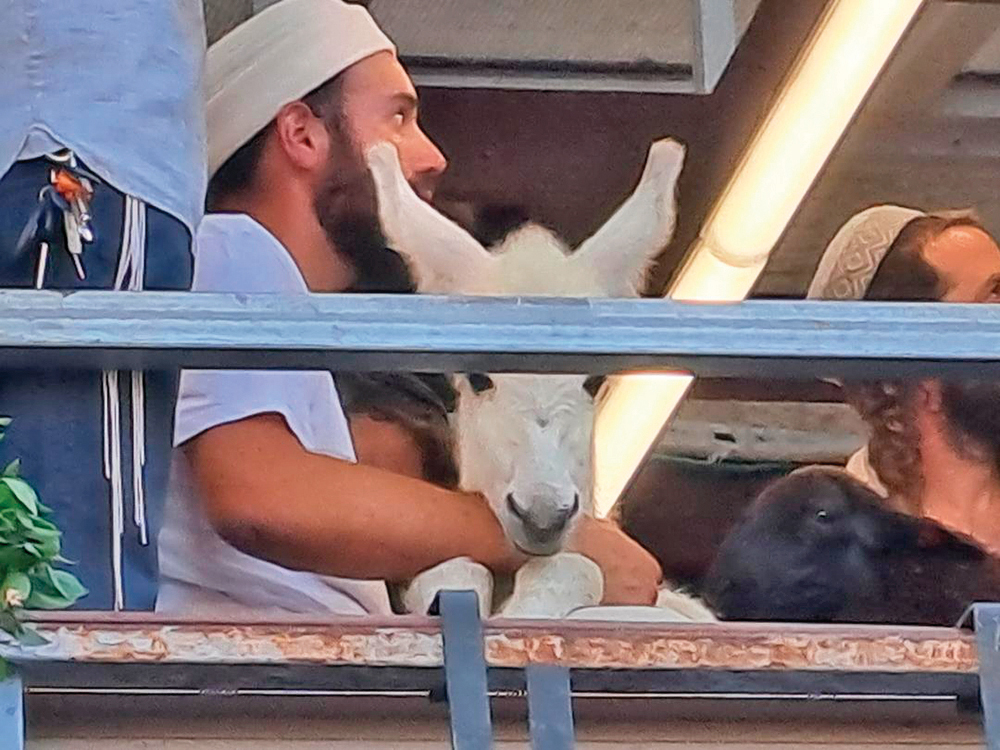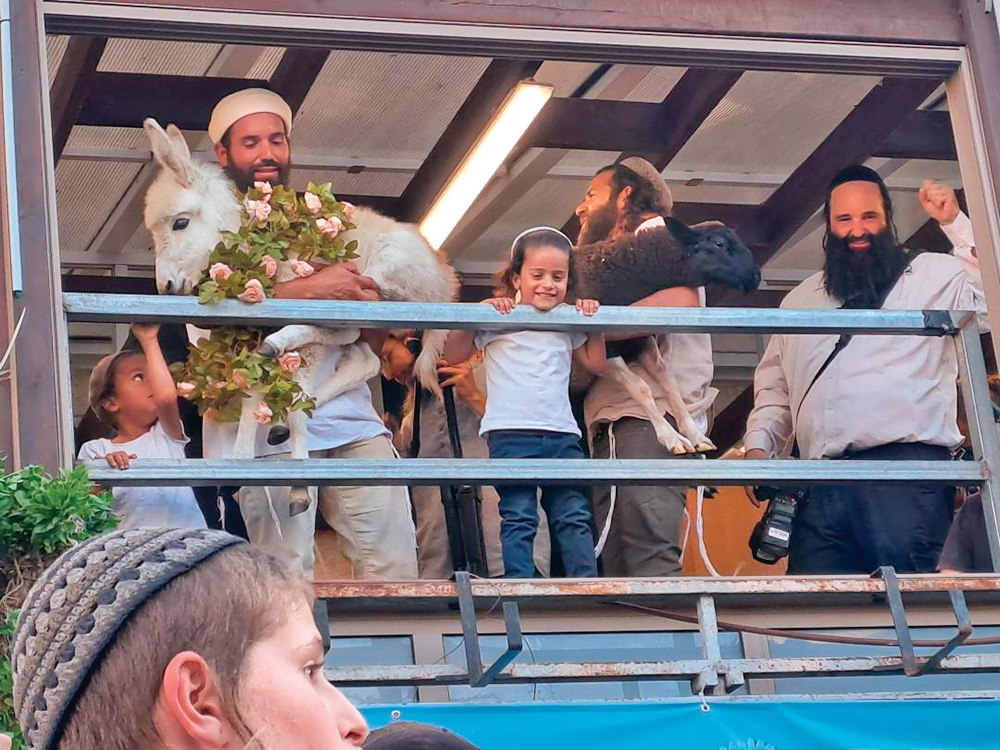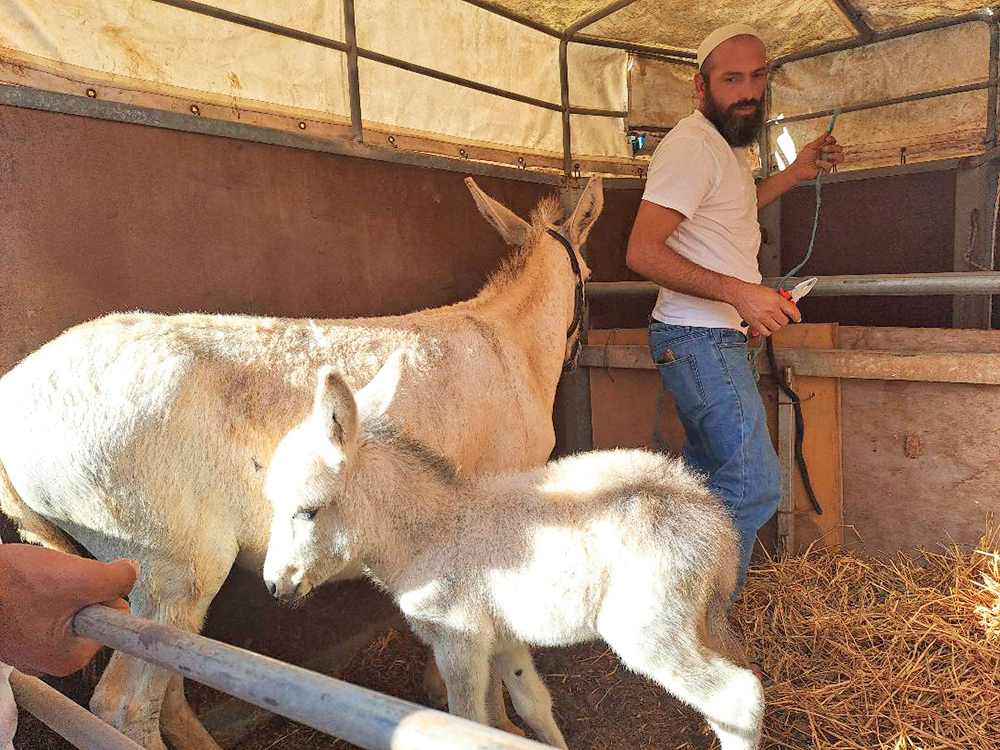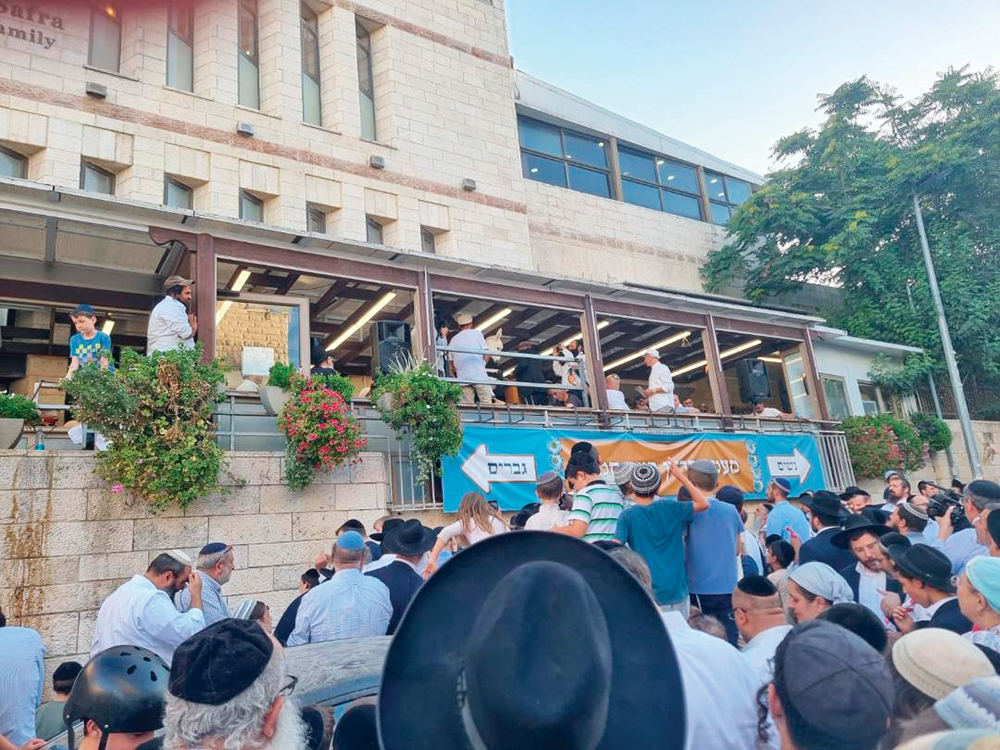
The Donkey says, “Yours Hashem is the greatness, the strength, the splendor, the triumph and the glory, even everything in heaven and earth. Yours, Hashem, is the kingdom, and the sovereignty over every leader.” (Perek Shira)
On July 11 (5 Tammuz), on a narrow street in Jerusalem’s Kiryat Moshe neighborhood, a newborn male white donkey was redeemed.
The mitzvah of Pidion Peter Chamor is not a frequent mitzvah. Unlike with people where males and females are born at an approximately 1:1 ratio, female and male donkeys are born at an 8:1 ratio. For this mitzvah to apply, the male donkey has to be the first issue of its mother, and the donkey cannot belong either to a Kohen, a Levi, a non-Jew, or to the husband of one. The donkey is also redeemed at a few days old, unlike first-born males who are redeemed at 30 days old.

The donkey is redeemed for a male or female lamb. A donkey who isn’t redeemed cannot be used for any purpose and must be beheaded. The donkey who participated in this mitzvah last week was surely aware of the significance of its fate because it sat placidly and calmly in the hands of its owner.
Donkeys have this special status because of our gratitude to them for helping Bnei Yisrael amass the wealth of the Egyptians prior to the Exodus from Egypt (Talmud Bechorot 5). Although it’s possible to redeem the donkey with money, the preferred way is by using a lamb because the Jewish people are metaphorically referred to as a lamb whom Hashem redeemed from Egypt.
Energy was high and so were the children climbing up on whatever they could to watch this rare event. Several hundred people crowded the street outside the Beis Midrash Darchei Hora’ah L’Rabbanim, named for Rav Mordechai Eliyahu zt”l, for this Shehecheyanu moment.
The donkey was born to two families, Maoz and Shlomo, at the Shivat Shomron Farm in the Jordan Valley, part of Yehuda and Shomron.
Having been redeemed, the donkey goes back to its mother (who came along for the ride).

Rav Chaim Suissa, the director of the Beis Midrash, organized the event. “Rav Salman Mutzafi ztl said that this mitzvah is what helps bring our redemption closer and hasten the coming of Mashiach,” he said. We need redemption now for our nation, our hostages and our soldiers. May we, God willing, have redemption for all these.” Redeeming the donkey is also a merit for material riches.
The mitzvah, though rare, appears in the Tefillin (head and arm) in the verse from Shemot 13:13, “Every first issue donkey you shall redeem with a lamb or a kid.” It’s a mitzvah we literally hold close to our hearts.
Chamor (donkey) also hints at chomriot—materialism– and with this mitzvah, we ask that our material lives be blessed and our spiritual lives enhanced.

At this time, when we are so looking for redemption from the current war in Israel and all the troubles it has precipitated, this was a hopeful and inspiring moment. Someone commented that the donkey was white, the same color donkey that Mashiach is expected to ride. May this be a good omen that he will come soon.
With thanks to Tzion Geller. (No animals were harmed in the fulfilling of this mitzvah.)










